Iceland: a natural laboratory for the study of climate change’s effects on soil
Iceland’s grasslands and living organisms react strongly to warming in an initial period of five to eight years, the ecosystem will have returned to a steady state closer to its original state when more than 50 years have elapsed.
This is what shows a recent research published in Nature Ecology & Evolution. This finding will help scientists work out how climate change is set to affect the planet’s different ecosystems.
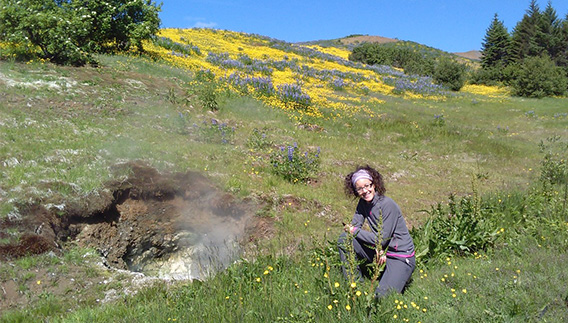
Climate change will warm not only the air and the seas but also the soil, where processes essential to our survival (e.g. the recycling of organic matter and soil fertility processes) take place. Conducted In Iceland by the ForHot consortium, which was established in 2012 by scientists who regard the country as Europe’s best laboratory for the study of global warming, the widest-ranging research yet undertaken on the short and long-term effects of soil warming has just been published in the journal Nature Ecology & Evolution. The ForHot scientists behind the study include CREAF researchers Sara Marañón, Jordi Sardans and Albert Gargallo, as well as Josep Peñuelas, a CSIC researcher based at CREAF, and Mireia Bartrons, a University of Vic - Central University of Catalonia researcher.
Nature Ecology & Evolution publishes the widest-ranging research yet undertaken on the short and long-term effects of soil warming.
The ForHot scientists behind the study include CREAF researchers Sara Marañón, Jordi Sardans and Albert Gargallo, as well as Josep Peñuelas, a CSIC researcher based at CREAF, and Mireia Bartrons, a University of Vic - Central University of Catalonia researcher.
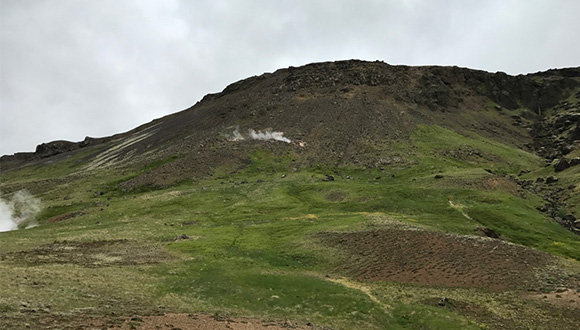
The study found that an ecosystem overreacts to soil warming at its onset, with the metabolism of microorganisms speeding up, carbon being released into the atmosphere and soil composition changing. However, in the long term the ecosystem returns to a balanced state in which no further drastic changes occur. Albeit with reduced levels of soil carbon, nitrogen and organic matter, the ecosystem restabilizes, with species of living organisms that are different or have adapted.
An ecosystem overreacts to soil warming at its onset, with the metabolism of microorganisms speeding up, carbon being released into the atmosphere and soil composition changing
The researchers compared the effects of warming on 124 ecosystem elements representing different living organisms (plants, communities of microorganisms, fungi) and non-living organisms (soil composition).
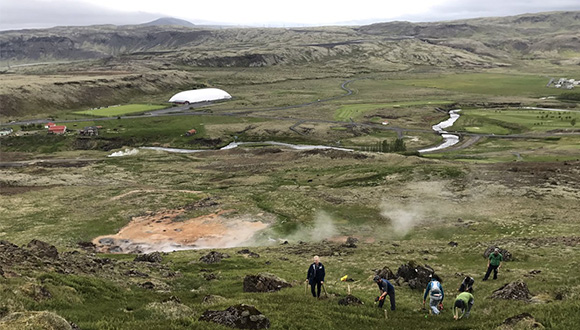
“Being able to draw on a consortium of researchers studying different variables – microbial communities, soil chemistry variables, root biomass, nematodes, vegetation, carbon levels, etc. – in the same places is one of our study’s strengths”, says Sara Marañón. “Other research has had a more limited focus”, she explains.
Part of Iceland in which soil warming’s short and long-term effects can be observed
The research was carried out near Hveragerdi, in southwest Iceland, where geothermal activity results in soil temperatures ranging from 0.5°C to 40°C, depending on proximity to subterranean hotspots. This exceptional circumstance makes it possible to study the impact of warming on the subarctic ecosystem.
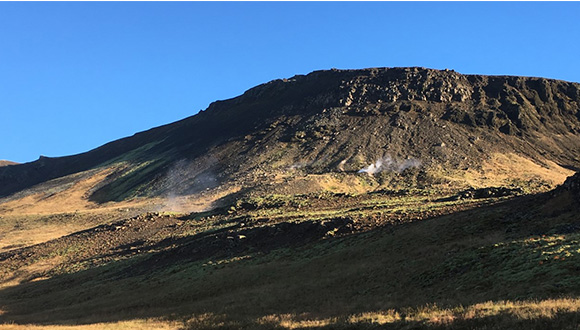
Additionally, there are temperature gradients of different ages in the ground at the research site. Some of them have existed for more than 50 years while others appeared due to an earthquake in 2008. The researchers were thus able to compare the short-term (five to eight years) and the long-term (over 50 years) effects of warming on the soil ecosystem.
“Our research has broken new ground by allowing us to observe very long-term changes in ecosystems and identify, for the first time, the adaptations undergone by different ecosystem elements and processes", continues Sara Marañón.
“Experiments that measure the impact of soil temperature are generally quite recent and have rarely run for more than 10 years”, remarks Sara. “Our research has broken new ground by allowing us to observe very long-term changes in ecosystems and identify, for the first time, the adaptations undergone by different ecosystem elements and processes, which is extremely useful”, she continues.
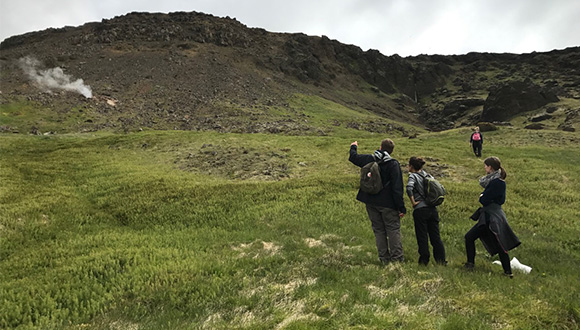
Rather than attempting to extrapolate the specific changes detected in the area’s different plant, animal and microorganism communities to other ecosystems, the most important aspect of this research consists of identifying the ecosystem elements that are most useful for predicting the long-term effects of climate change.
The most important aspect of this research consists of identifying the ecosystem elements that are most useful for predicting the long-term effects of climate change.
“Expecting all global warming studies to run for more than half a century is unrealistic”, says Sara. “With that in mind, our research provides a framework for understanding the changes warming causes in ecosystems, and will help future research to choose variables on the basis of which more accurate long-term predictions can be made through short-term observation”, she concludes.
Article de referència:
Tom W. N. Walker et al. (2019). A systemic overreaction to years versus decades of warming in a subartic grassland ecosystem. Nature Ecology & Evolution. https://www.nature.com/articles/s41559-019-1055-3
Iceland







